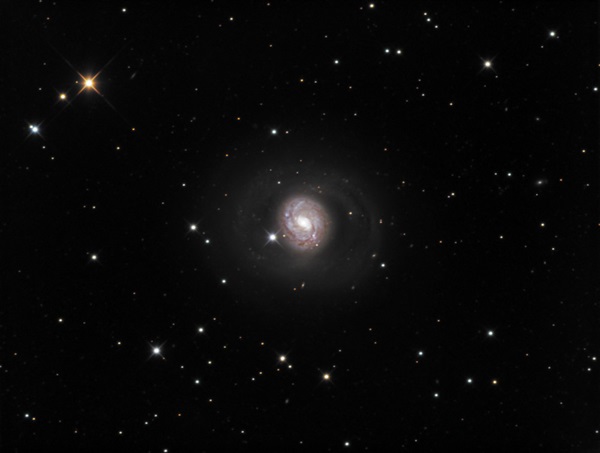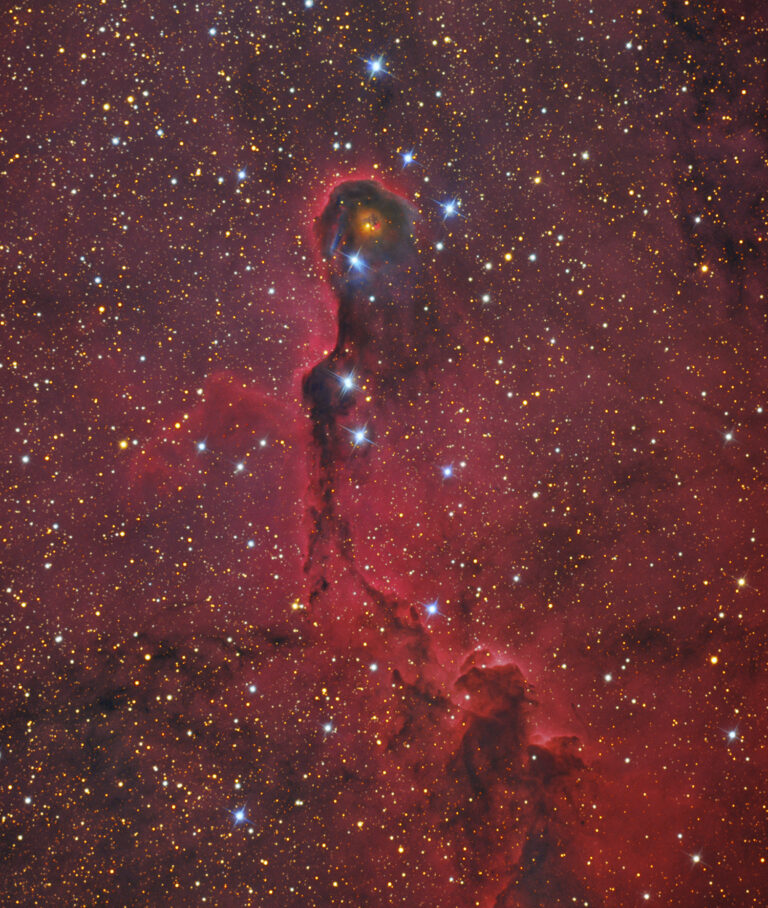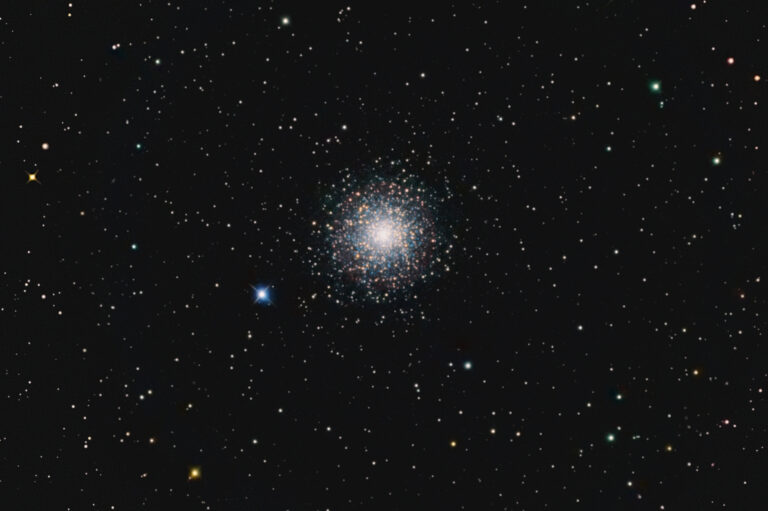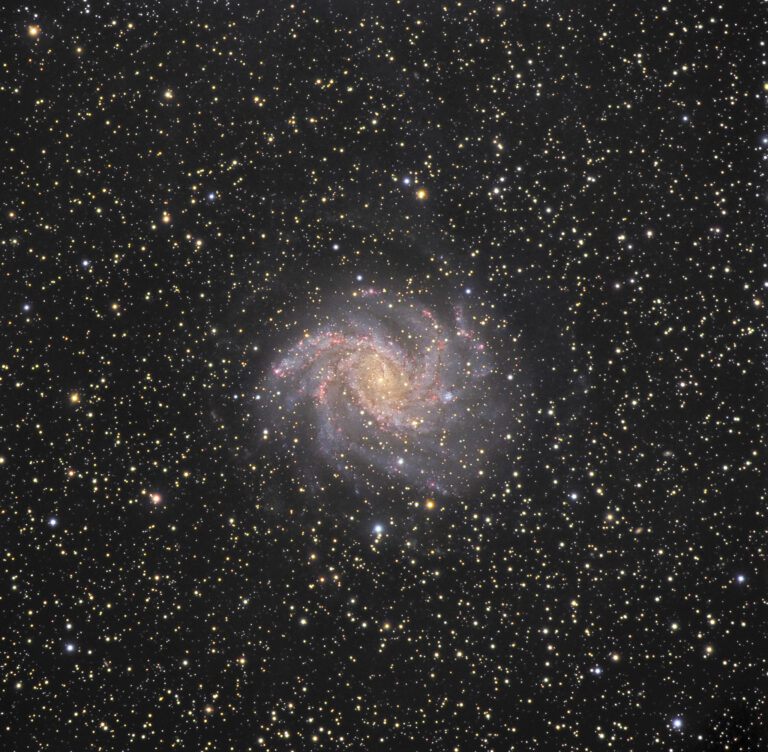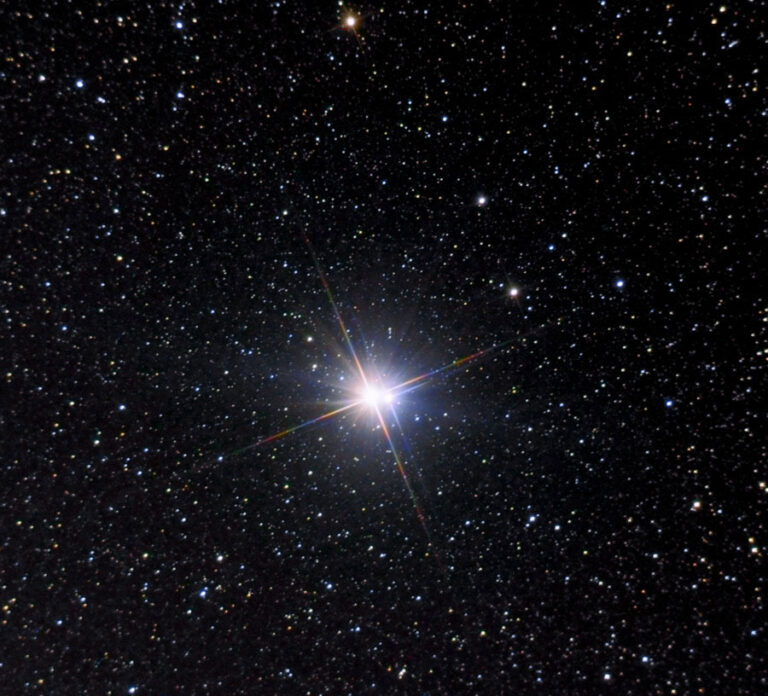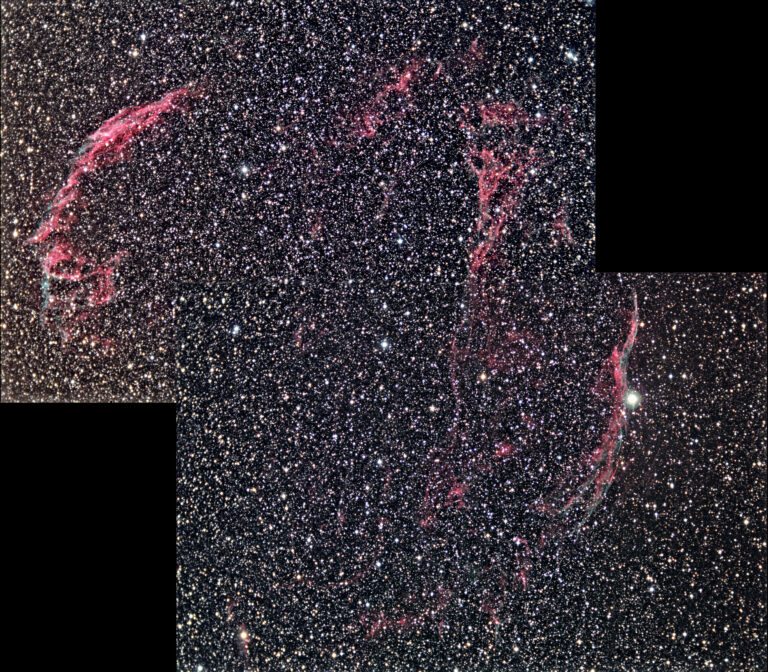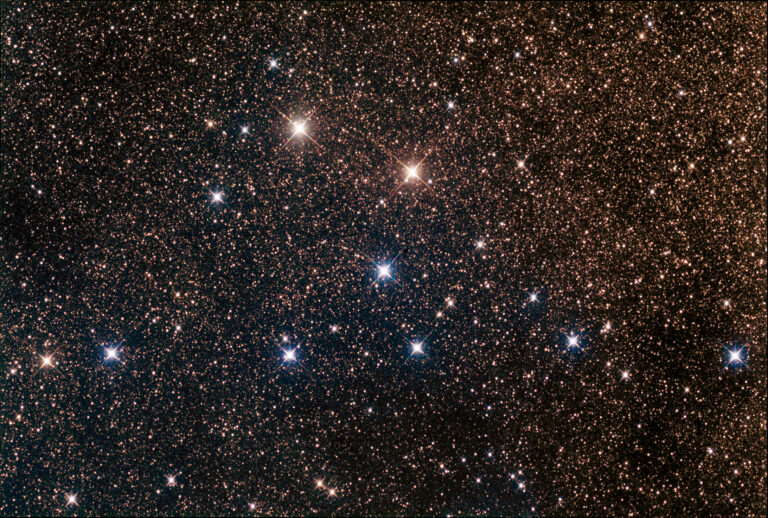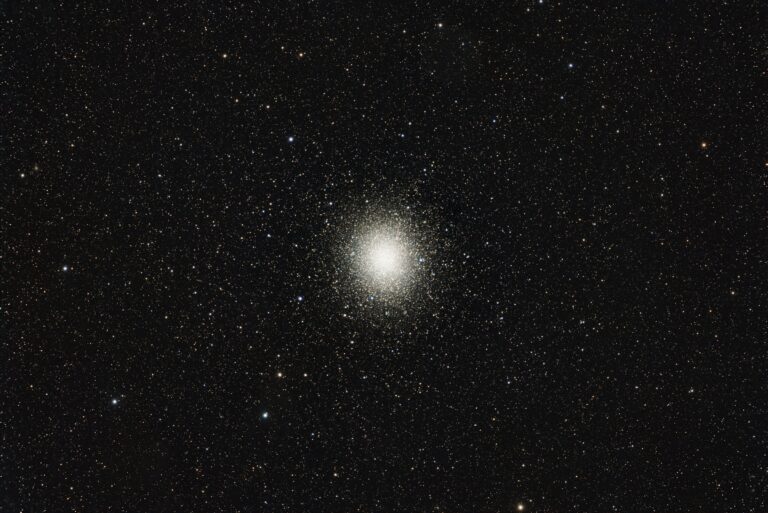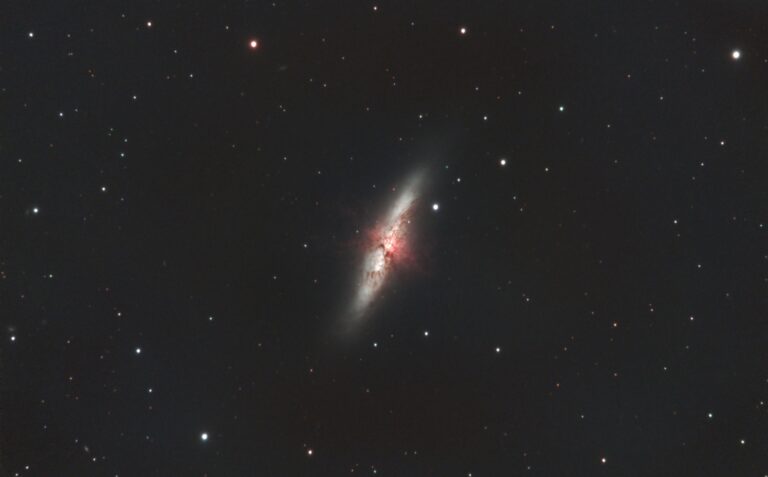Key Takeaways:
The prototypical Seyfert galaxy M77 in Cetus is the brightest (magnitude 9) and closest (about 45 million light-years) of its class. Seyfert galaxies are named after American astronomer Carl Seyfert, who in 1943 created a list of galaxies that all have an exceptionally bright or starlike nucleus. Seyferts have a spectrum dominated by prominent emission lines, which originate from interstellar gas being heated near the galaxy’s nucleus by a supermassive black hole.
In 2018, the Atacama Large Millimeter/submillimeter Array (ALMA) in Chile imaged a 20-light-year-wide doughnut-shaped ring (or torus) of dust and gas rotating around M77’s central black hole, which contains the mass of 15 million Suns. The torus appears slightly asymmetric, and its rotation exhibits highly random motion. This suggests the active galactic nucleus had a violent history, possibly including a merger with a smaller galaxy.
Pierre Méchain discovered M77 on Oct. 29, 1780, and reported its position to Charles Messier. Messier saw it as a “cluster of faint stars” with nebulosity, and William Parsons, Earl of Rosse, called it a “blue” spiral nebula in 1848. Today we know M77 is a chaotic spiral galaxy with an infrared bar. Its bright inner disk rivals the Milky Way in size, and the galaxy also sports a fainter spiral skirt that increases M77’s size to 170,000 light-years.
You’ll find this 9th-magnitude wonder 1° southeast of 4th-magnitude Delta (δ) Ceti, just west of a 10th-magnitude star (SAO 130073). The galaxy’s youthful inner region (consisting of tightly wrapped, knotty spirals near the nucleus with two main dust arms) can be viewed through moderate-sized telescopes at 150x and greater. Its older, fainter outer region requires larger telescopes. Astroimagers can capture its prominent star-forming regions located near the boundary of the inner and outer regions.
The galaxy’s brightest star-forming regions have been spied in telescopes as small as 4 inches; this view probably led astronomers like Messier to mistake it as a cluster.
Make sure to explore Astronomy’s full list of 101 cosmic objects you must see. New entries will be added each week throughout 2022.
To get the latest astronomical news and observing content delivered directly to your door, subscribe to Astronomy magazine today!

